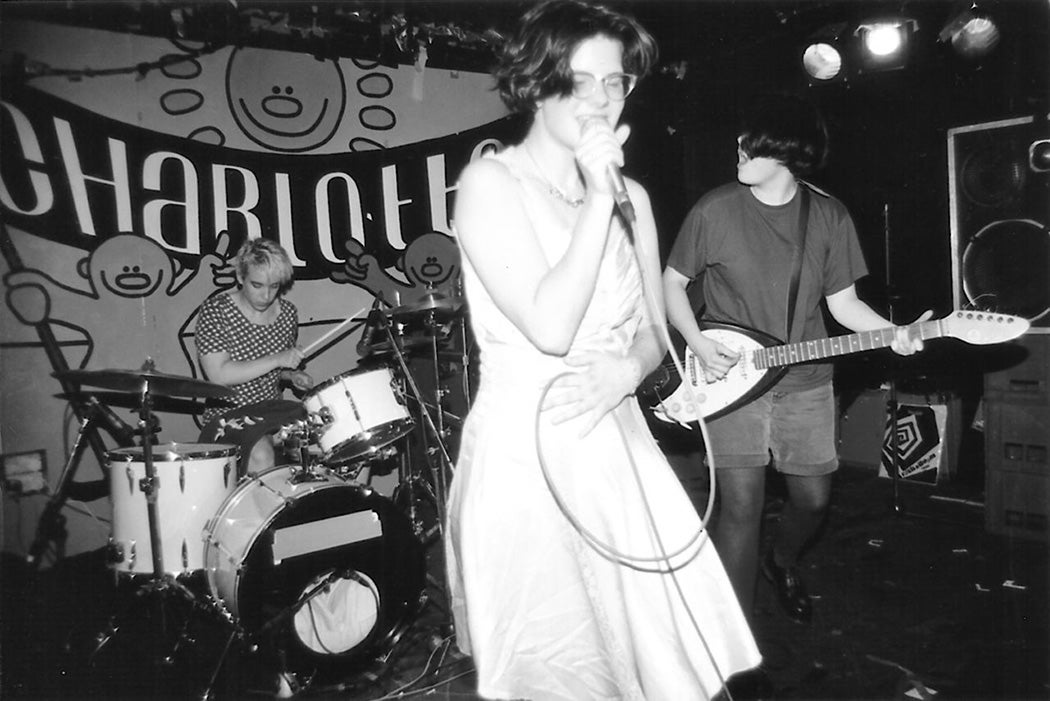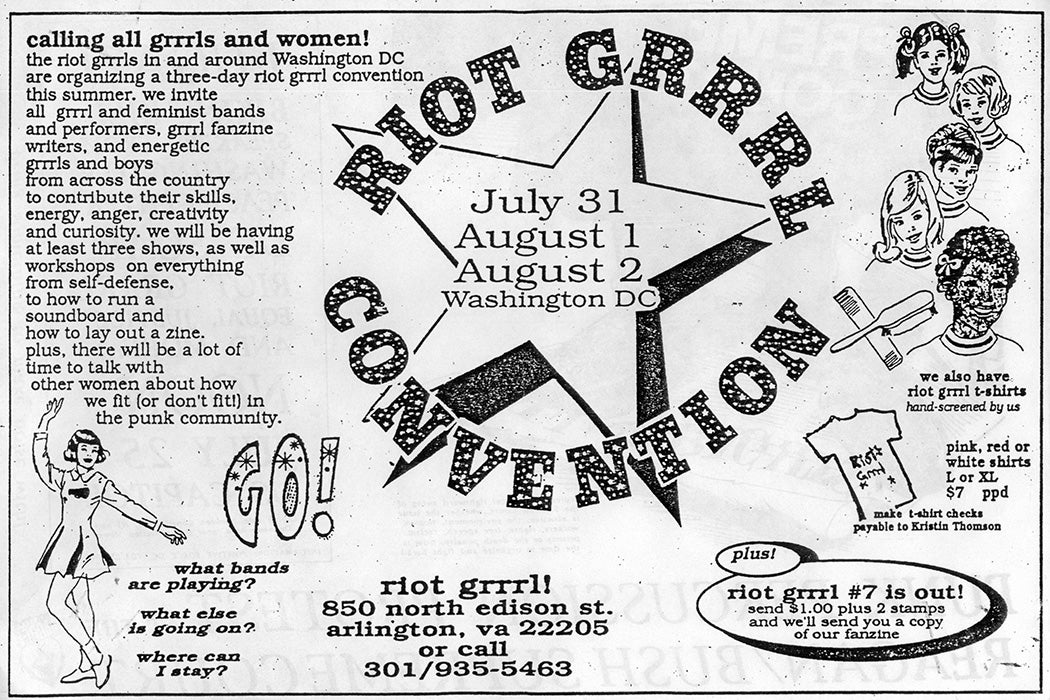It’s the 1990s. You’re a young woman, and you’ve got something to say. As it was for women of preceding generations, getting someone to listen to you is hard. Lucky for you, if you were part of the riot grrrl scene, there were pages waiting to be filled with your voice.
As researcher Janice Radway explains, during the early ’90s, a wave of developments “augmented the sense that something significant was happening among punk girls and women.” A mix of music, politics, and DIY publishing converged to create the girl zine movement. A self-publishing frenzy of small magazines that “discussed domestic violence, incest, and rape; wrote about sexuality and explored the meaning of identifying as lesbian, queer, straight, or even straight-edge; and laid out their hopes for a more egalitarian, girl-friendly future.”
The most common origin story of the girl zine movement is as part of another movement—riot grrrl. This punk-rock subgenre/movement started in the late ’80s/early ’90s with women-led bands like Bratmobile and Bikini Kill. Around the same time came the launch of a zine called riot grrrl, which focused on “the general lack of girl power in society as a whole and in the punk rock underground.” Musicians and writers came together in a movement that would take the name of the zine.

Zines hearkened back to earlier fanzine movements, some dating to the 1930s, according to sociologist Kimberly Creasap. And by the 1970s, “fanzines about punk rock music emerged as fans began to write about punk.” The riot grrrl zines grew from those, as women fans tried to confront the sexism in the genre. Also, much like the scrapbooks and political pamphlets of the past, zines gave women “a means of documenting their activities and challenging news coverage of them,” explains Creasap.
Zines also gave everyone a chance to become a creator. This was “a space for young women to act as writers, designers, artists,” explains scholar Michelle Comstock. The pages were filled with hand-drawn images or those “cut-and-pasted by hand. Essays, poems, or confessional stories might also be hand-written—or typed with drawings framing the paragraphs,” Creasap writes. Zines could also be handed out, creator to reader. Rather than a sea of voices on an endless digital landscape, they were passed among friends, stacked at record store counters, or sold via mail to audiences that were deeply involved in an established movement.
Weekly Newsletter
But all zines that sprang from the “girl zine” era weren’t connected with the riot grrrl movement, and the punk origin story has been seen as excluding many of the voices that were an integral part of the movement. As Radway writes, “defining zines created by girls as girl zines or riot grrrl zines, or as feminist zines, potentially ignores or backgrounds a whole range of other commitments and preoccupations.” As she points out, the punk scene was “plagued from the beginning by complicated racial politics and outright racism.” While women were fighting for their space in the scene, other women were rightly asking to be seen, too. As zine creator and professor Mimi Thi Nguyen said in a 1997 interview, “We talk about women’s issues, but which women are we talking about?” These sorts of critiques likely led to the increase of the number of zines by people of color over the course of the late 1990s, Radway notes.
The zine movement gave women a chance to be heard—on their own terms— and as Comstock points out, gave young women the tools for “self-expression and solidarity.”
Support JSTOR Daily! Join our new membership program on Patreon today.







